*my alevels are now over so this blog is quiet!*othello, streetcar, frankenstein, handmaid's, poems of the decade, wife of bath. don't mind me just making a little place to come back to all the analysis i find that promptly lives in my head rent free for the rest of time. i tag by text, theme and character. sideblog.
Don't wanna be here? Send us removal request.
Text
“It was only once – once – that an audience went to see Romeo and Juliet, and hoped they might live happily ever after. You can bet that the word soon went around the playhouses: they don’t get out of that tomb alive. But every time it’s been played, every night, every show, we stand with Romeo at the Capulets’ monument. We know: when he breaks into the tomb, he will see Juliet asleep, and believe she is dead. We know he will be dead himself before he knows better. But every time, we are on the edge of our seats, holding out our knowledge like a present we can’t give him.”
— Hilary Mantel, “Can These Bones Live?” 2017 Reith Lecture
7K notes
·
View notes
Photo


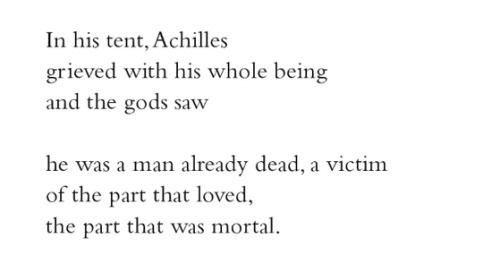





the inescapable structure of tragedy, the lines of causality
matthew stover, star wars episode III: revenge of the sith novelization / prophetic perfect tense / louise glück, the triumph of achilles / hadestown, “road to hell” / sunnyscenegenerator / joanna newsom, “waltz of the 101st lightborne”
23K notes
·
View notes
Text
Resource: blog post on Ovid in Wife of Bath’s Tale
This blog post is a wonderful essay on how Chaucer uses Ovid’s tale in Wife of Bath in relation to gender, power, and oral storytelling
5 notes
·
View notes
Text
wait. list of quotes from kafka’s letter to his father that killed me
11K notes
·
View notes
Note
What are your thoughts about Gerd Weisler s'il vous plait?
*sighs* I love him. No, seriously, Wiesler is my favourite movie character. I love him for what he is and for what he symbolizes.
Wiesler is a near-perfect redemption story. We can argue it happens way too fast, but it is a movie and the plot has to unravel in two-three hours. The reason I think his redemption is so extraordinary is because Wiesler doesn’t really have a plan. His change occurs in unplanned stages and as a result of his prickling conscience. It’s not an active project of resistance. It’s just that he slowly comes to realise that what he’s doing isn’t right, and he goes from small acts of resistance (not asking the kid who his father was) to actively hindering the investigation to protect Dreyman. He goes from resisting doing his job to prevent himself and others from doing it.
I love what is behind his redemption. The impact the relationship between Dreyman and Christa-Maria has on him. How a lonely man turned wishful instead of bitter when witnessing love between two people. His reaction wasn’t to break off Christa and Dreyman but to help them be together. I love how the movie gives us a sinister stasi agent who turns out to be lonely and in desperate search of meaning he didn’t know he was lacking.
I love – I love – that he is a real socialist. He really does believe in it. His devotion to his duty, horrible as it is, only makes sense if he heartedly believes he’s doing the right thing, that he really is the soul and shield of the party and that this is something very worthwhile. This is why his rebellion is accompanied by a growing disillusionment not so much in the ideal of socialism but in the instrument (the Party) supposedly defending it.
And finally, and this is really my favourite aspect of the whole movie, the fact that he is changed because of art. Of literature and music. That they represent humanity and love and all that is sublime. This character’s redemption comes because he listens to a piano sonata and because he reads Brecht. These things awaken in him the humanity he had buried deep inside him. This for me is the point of all art – that it can humanize us and make us better, and because becoming better is the point of life then it is the point of everything. And Wiesler is the one character I know who embodies this perfectly.
(Also he has a dark sense of humour and he really rocks his ties).
#das leben der anderen#a level german#quick break from english posting cos i really love the take of this post and want to be able to come back to it
39 notes
·
View notes
Text
Streetcar study guide
Excerpt from this very helpful study guide PDF:
‘In Conversations with Tennessee Williams the playwright discusses his concern with the “Old South’s romantic attitude towards life” which is in contention with the “merciless harshness of America’s success-orientated society”. These two opposing ideals are represented in the clash between Blanche and Stanley.
Blanche is a relic from an old world, personifying the faded grandeur of the pre-Civil war era with her notions of social hierarchy and pretentions to gentility. Stanley is associated with the new America which is epitomised by the New Orleans setting which signifies the lively, brash multi-cultural landscape of post-war America.
From the outset Blanche and her ideals are incongruous with the fast-paced city, and her attempts to cling to the past lead to an epic battle between old and modern values.‘
13 notes
·
View notes
Text
The Southern Belle in Streetcar
“Fifty percent illusion”: The Mask of the Southern Belle in Tennessee William’s A Streetcar Named Desire, The Glass Menagerie, and Portrait of a Madonna by George Hovis
‘She feels cheated, that society has not upheld their end of the bargain. She has played the role of the belle without receiving the promised economic and psychosexual compensation.’
Page 171 onwards of this book holds some pretty good stuff for Blanche - a fair bit to sift through but what is there is really good.
5 notes
·
View notes
Text
Notes on Streetcar - resource
this pdf of teacher’s notes for Streetcar goes clearly and moderately deeply through analysis of the epigraph, title, each scene of the play, symbols, motifs and irony
1 note
·
View note
Text
when blanche dubois said “some things are not forgiveable. deliberate cruelty is not forgiveable. it is the one unforgiveable thing, in my opinion, and the one thing of which i have never, ever been guilty.”
726 notes
·
View notes
Photo

12 notes
·
View notes
Photo

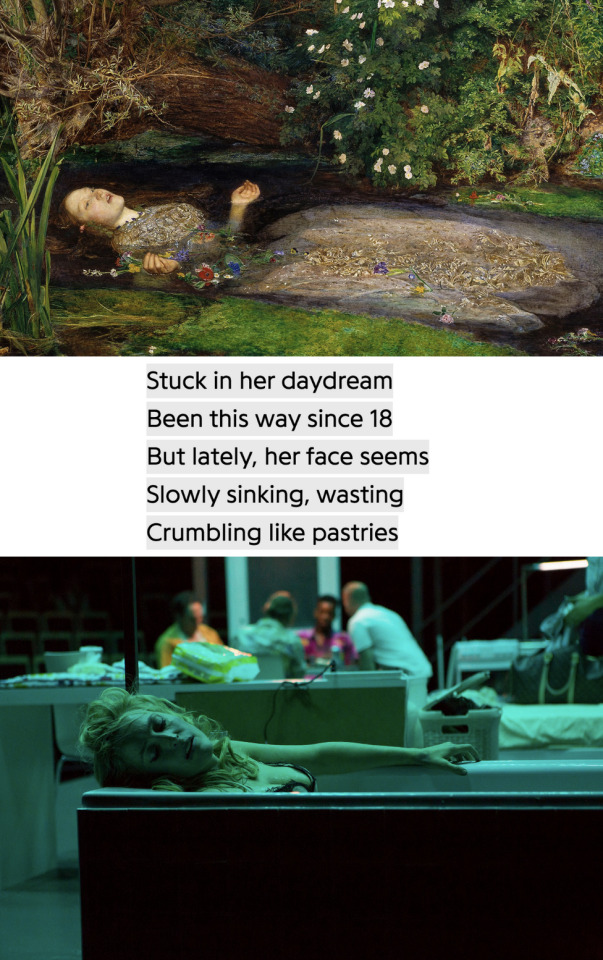



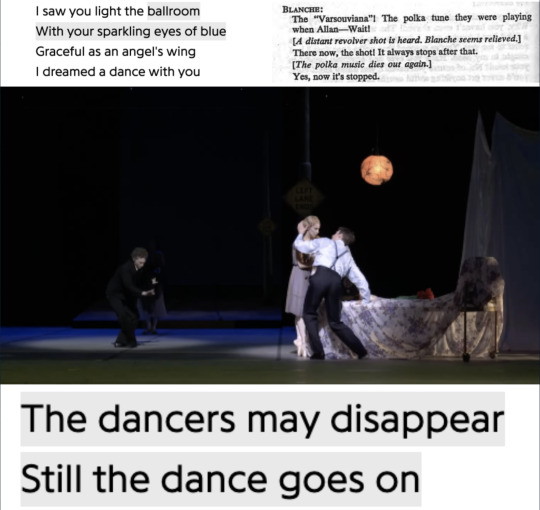
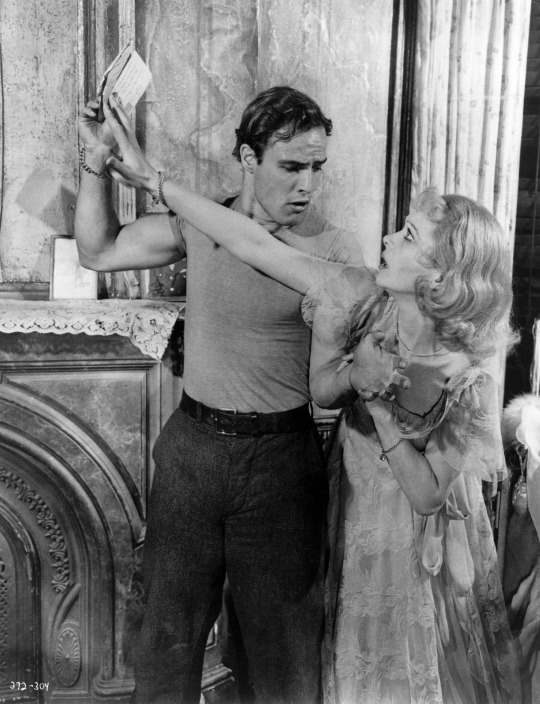
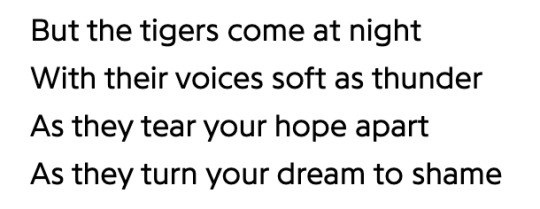


blanche dubois (now life has killed the dream i dreamed)
the unabridged journals of sylvia plath // ophelia (john everett millais) // the a team (ed sheeran) // a streetcar named desire (andrews) (2014) // a streetcar named desire (tennesse williams) // young and beautiful (lana del rey) // a streetcar named desire (tennesse williams) // liability (lorde) // i dreamed a dance (next to normal) // a streetcar named desire (tennesse williams) // a streetcar named desire (neumeier) (2017) // i dreamed a dance (next to normal) // a streetcar named desire (1951) (dir. kazan) // i dreamed a dream (les miserables) // last words of a shooting star (mitski) // of nightingales that weep (katherine paterson) // one flew over the cuckoo’s nest (ken kesey)
128 notes
·
View notes
Text
Research on A Streetcar named desire.
“Blanche presents herself as a romantic throughout the play, clutching to notions of star-crossed lovers and gentlemen sweeping ladies off their feet. But when faced with a true love story, she balks. Blanche's kind of romance can't happen in the gutter. In theory, Blanche should see her sister's marriage as an epic love story between the princess and the commoner. But the truth is that Blanche's romanticism is a cover for the true cynicism of one who loves only calculatingly, for money and power and security. Of the DuBois sisters, Stella is the romantic.”
Weinbloom, Elizabeth. Chainani, Soman ed. "A Streetcar Named Desire Scene 3 Summary and Analysis". GradeSaver, 11 August 2008 Web. 21 September 2019.
4 notes
·
View notes
Text

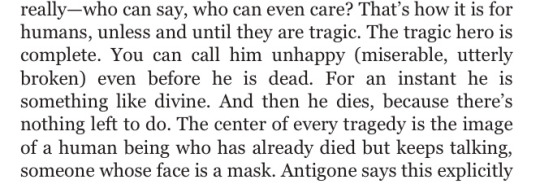


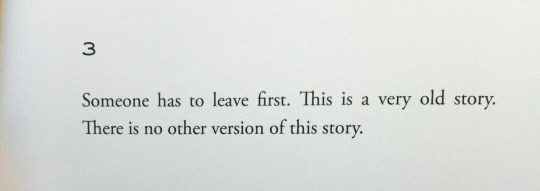
Having some thoughts on tragedy once again
hadestown//michael kinnucan//guillermo del toro//richard siken
188 notes
·
View notes
Text










When Nietzsche Wept, Irvin D. Yalom / Romeo and Juliet staged at The Globe Theatre / tragedycamp on tumblr / Tenet (2020) dir. Christopher Nolan / Jean Anouilh, Antigone, 1944 (tr. Lewis Galantiere) / Behind the scenes of Titanic (1997) dir. James Cameron / To Speak Is To Blunder, Yiyun Li / An Introduction to Shakespearian Tragedies, Kiernan Ryan / Early Modern Tragedy and Performance, Tiffany Stern
3K notes
·
View notes
Text
Birth in Frankenstein and Handmaid’s
Victor and the Monster can be read as father and son (with Victor as God and the Monster comparing himself to both Adam and Lucifer) however there are also intrinsic parallels with Victor and the Monster as mother and daughter, most obviously displayed in Victor’s physical creation of the Monster (this post explores this concept well).
So in interpreting Victor’s creation of the Monster as a kind of birth, we can easily forge connections between themes of birth in Frankenstein and Handmaid’s.
The parallel I noticed first was the trance-like state both Victor and the women during the birthing ceremony have to fall into to complete the task. When Victor is creating his Monster in chpt. 4 he falls into a ‘trance’, he ‘seem[s] to have lost all soul or sensation but for this one pursuit’, with a ‘resistless and almost frantic impulse urging [him] onwards’. He implies he could not have finished his work without forcing himself in to such a state, as his ‘human nature turned way with loathing from [his] occupation’, emphasising the importance of this process in his work.
In the birthing ceremony in chpt. 21, a similar state in encouraged. The handmaids ‘chant, as [they] have been taught’ in the Red Centre, meaning Gilead also places importance in trance-like situations during a birth. The ‘soft chanting envelops [them] like a membrane’, causing them to focus only on the birth happening, much like Frankenstein’s aim to concentrate only on what he is creating.
However, there is a major difference between the facilitating of the trances, despite their shared purposes to encourage birth. Victor purposefully isolates himself from the rest of society, He works ‘in a solitary chamber, or rather a cell’, refusing to answer letters from his family in order to fully focus on his work. Once again, implying that intervention from others would stop his birthing process. In Handmaid’s, the birthing ceremonies act as the centre of a community, bringing the handmaids and the wives together; the handmaids are particularly communal ‘we grip each other’s hands, we are no longer single’. Trance-like states are induced by either extreme isolation or extreme community, but no matter the way they are induced, they both aim to ease the birthing experience and even complete the birth at all.
This difference between isolation and community is due to the nature of their societies: while reproduction is the centre of Gilead’s entire ideology and heavily encouraged, Victor is seen to go against God and the natural order as he almost tries to replace God with himself. These trance states can therefore be seen as a spiritual, religious endeavour. The participants are trying to get closer to God, to become one with the original creator of life as they or those around them birth new life themselves.
#i don't really know where i was going with this it just kind of happened#frankenstein#handmaid's#birth#parenthood#religion#a level english#comparison question
0 notes
Text
Frankenstein and Handmaids: objects in frames
‘Atwood’s two dedications, three epigraphs and the pseudo-factual historical notes act as a frame around an enclosed space, presenting Offred as an object.’ (x, script A)
Similarly, the framing nature of the epistolary letters in Frankenstein act as a frame around which to present the warnings for the future Mary Shelley incites with her science fiction themes.
The Romantic hero reflects this framework, with the centralising of the self over all else. The rest of the world acts as a frame around an idealised identity. In Handmaids, this is Offred trying desperately to remember her old world before Gilead, and in Frankenstein this is Victor’s rise from ambitious student to failure.
#frankenstein#victor frankenstein#mary shelley#science fiction#the handmaids tale#handmaids#offred#writers techniques#epistolary#romantic hero#themes#my analysis#a level english
5 notes
·
View notes
Text
Resource: AS and A2 English Blog
This blog has also been a particular lifesaver. Run by A Level students who do the Edexcel/Pearson 2015 EngLit syllabus, it features a bunch of analysis, essays and revision notes of books almost identical to the list I focus on here.
Frankenstein
Handmaids
Streetcar
Othello
Poems of the Decade
Romantic Poetry (alas different to what I do, Wife of Bath)
They have a huge backlog of content, and their last post was still relatively recent as Oct. 2021. I highly recommend!
0 notes